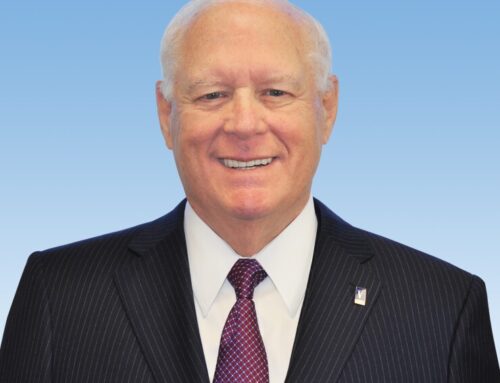In the aftermath of the Federal Open Market Committee’s June meeting, certain interest rate spreads should narrow, but the overall impact for mortgages is mixed, a Keefe, Bruyette & Woods report said.
Part of that depends on which segment of the industry the company operates in. Mortgage rates remaining elevated, with the 30-year fixed only falling to 6.5% by year-end, is good news for servicers, KBW analysts Catherine Mealor, Matt Kelley, Bose George and Christopher McGratty wrote.
“Our revised baseline still calls for two 25 basis point cuts before year-end and two in 2026, aligned with the Fed’s dot plot,” the analysts said. “The Fed held rates constant (as expected), and Chairman Powell stated that the effects on the economy from changes in trade, immigration, fiscal and regulatory policies remain uncertain, and they are well positioned to ‘wait to learn more’ about the likely course of the economy before considering any adjustments to its policy stance.”
Post-meeting, voices in the Trump Administration, most notably Federal Housing Finance Agency Director Bill Pulte, have loudly proclaimed their annoyance with Powell’s actions.
How the yield curve is affected
KBW still thinks “a modestly steeper yield curve” will happen when it does cut short-term rates. But too much of a cut, in line with the 100 basis point cut President Trump was looking for prior to the meeting, is likely to make the long-end of the yield curve surge, Nigel Green of the deVere Group said on June 17.
The 30-year fixed is expected to trend down from the current 6.81% in this week’s Freddie Mac Primary Mortgage Market Survey, but only back to the level prior to Trump’s Liberation Day tariff announcement, KBW said.
“That consistency offers some reassurance for homebuyers and homeowners, especially in a market that’s been sensitive to every shift in economic sentiment,” said Samir Dedhia, CEO of One Real Mortgage. “Lower inflation data, including this week’s softer [Consumer Price Index and Producer Price Index] reports, has helped ease pressure on rates for now.”
Yields on the 10-year Treasury, one of the elements used in pricing mortgages, should also move a bit lower in the future.
How the 10-year Treasury yield changed post-FOMC meeting
So far, however, the 10-year has remained flat, closing at 4.393% on June 17, and rising a scant 0.4 basis points the following day (trading closed one hour after the Fed announcement). On June 20, it had fallen just over 2 basis points to 4.375% (no trading took place on June 19).
The KBW analysts “anticipate some narrowing of spreads between agency mortgage-backed securities and Treasuries,” another element in setting rates for the 30-year fixed.
“The higher-for-longer rate outlook remains positive for mortgage servicers and on a relative basis for mortgage insurers,” KBW wrote. “We also remain constructive on agency MBS REITs, which are benefiting from wide spreads and should benefit further if the Fed cuts rates, which will likely drive tighter spreads and a steeper yield curve.”
The FOMC’s balancing act’s effect on mortgages
Orphe Divounguy, senior economist at Zillow, noted the Fed’s balancing act regarding the two possible outcomes of its decision.
“Uncertainty over the impact of fiscal policy and tariffs could keep Treasury yields — and mortgage rates — somewhat elevated,” Divounguy said. “Meanwhile, conflict in the Middle East and a weaker domestic economy could lead to a flight to safety that pulls yields lower.”
A so-called flight to safety from investors typically involves the purchase of 10-year Treasuries. When demand is high, the price rises and the yield falls.
The impact on homebuying season
Consumers have more bargaining power this spring for buying a home in 2025 than in the past seven years, Divounguy noted. If prices and mortgage rates move lower, the spring homebuying season could spill over into summer. Whether it happens in the wake of the FOMC meeting is another question.
“Despite large pent-up demand, economic uncertainty and a weakening labor market have kept home sales roughly flat versus last year,” Divounguy said. “Although mortgage rates had been easing ahead of the Fed decision, rates aren’t likely to move lower in the near term.”
Dedhia said for those looking to buy a home or refinance, this period of stability is the window to act.
“Looking ahead, all eyes are on the Fed’s upcoming meetings in July, September, October and December,” Dedhia said. “Any indication of a policy shift whether through rate cuts or changes in their economic outlook could quickly impact mortgage pricing.”
The FOMC should cut rates in July, according to comments from Fed Governor Christopher Waller. A survey from Wolters Kluwer of economists conducted before the June meeting found just 9% supporting a July cut, with 50% saying the FOMC should wait until September and 41% declaring even later.

